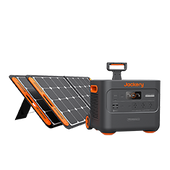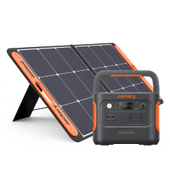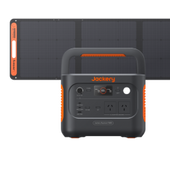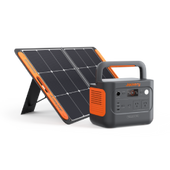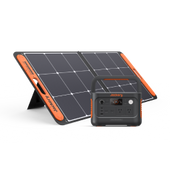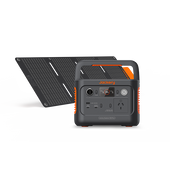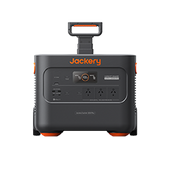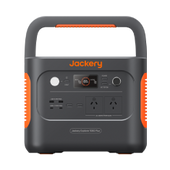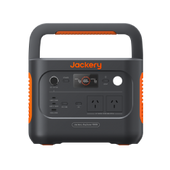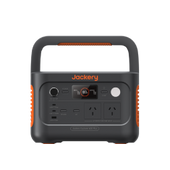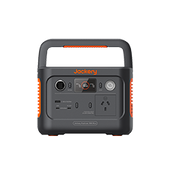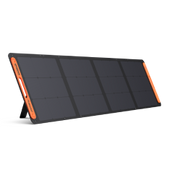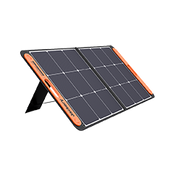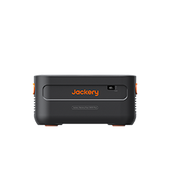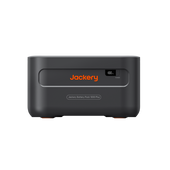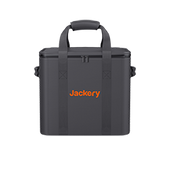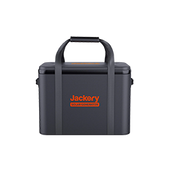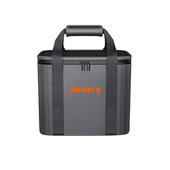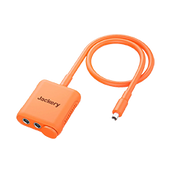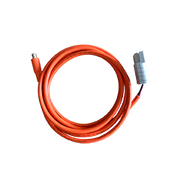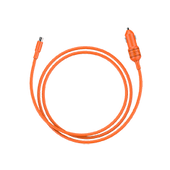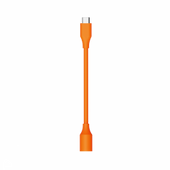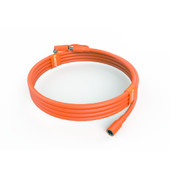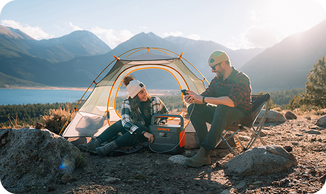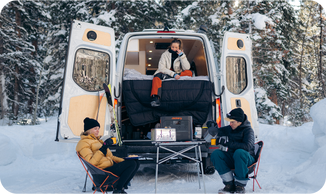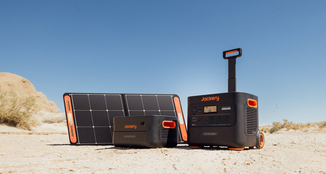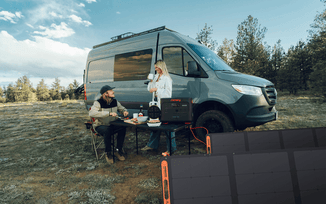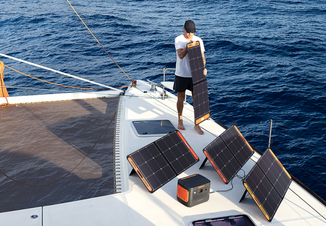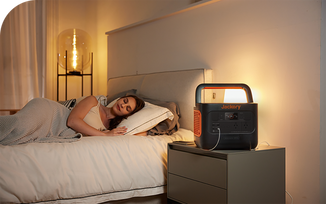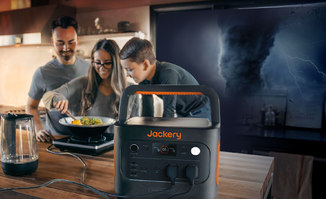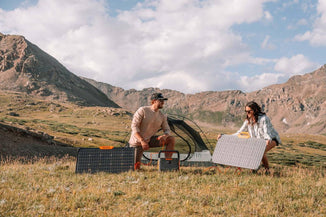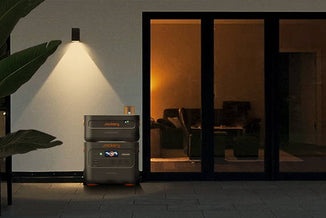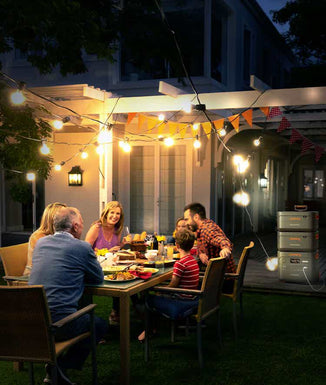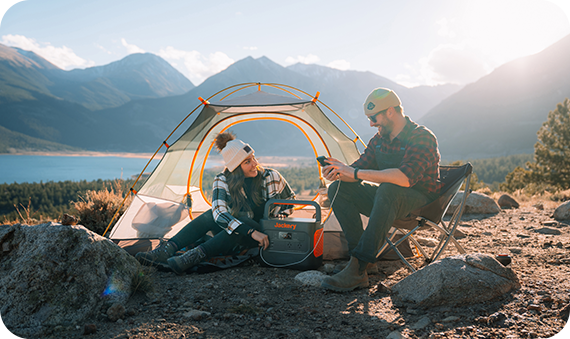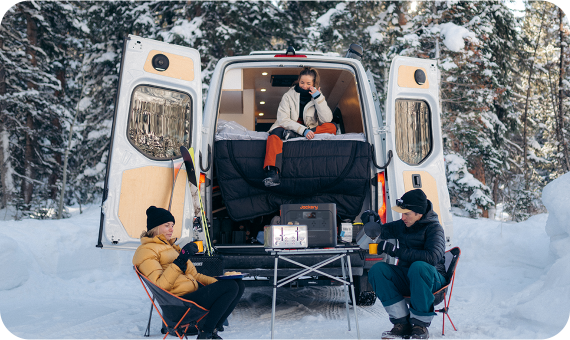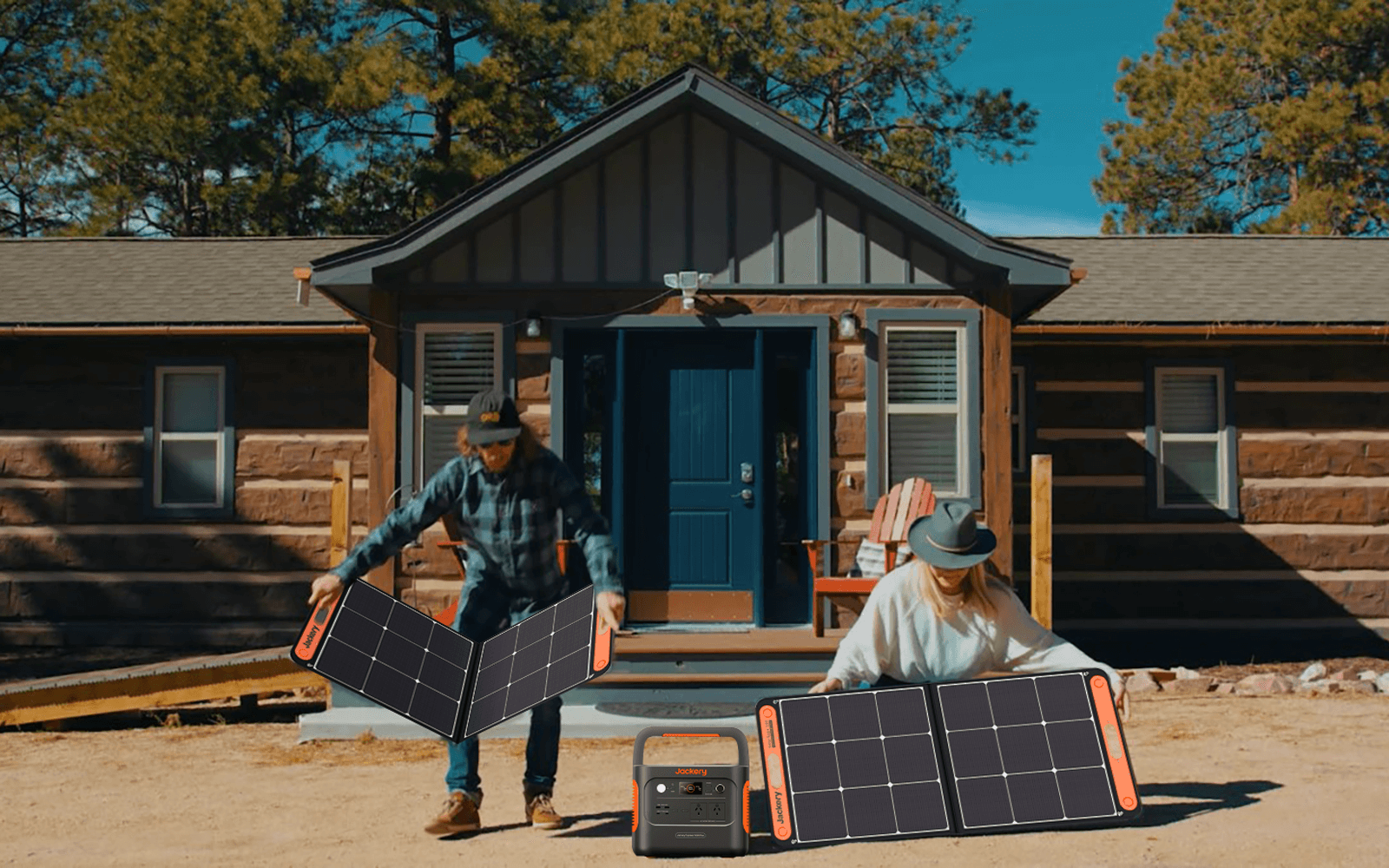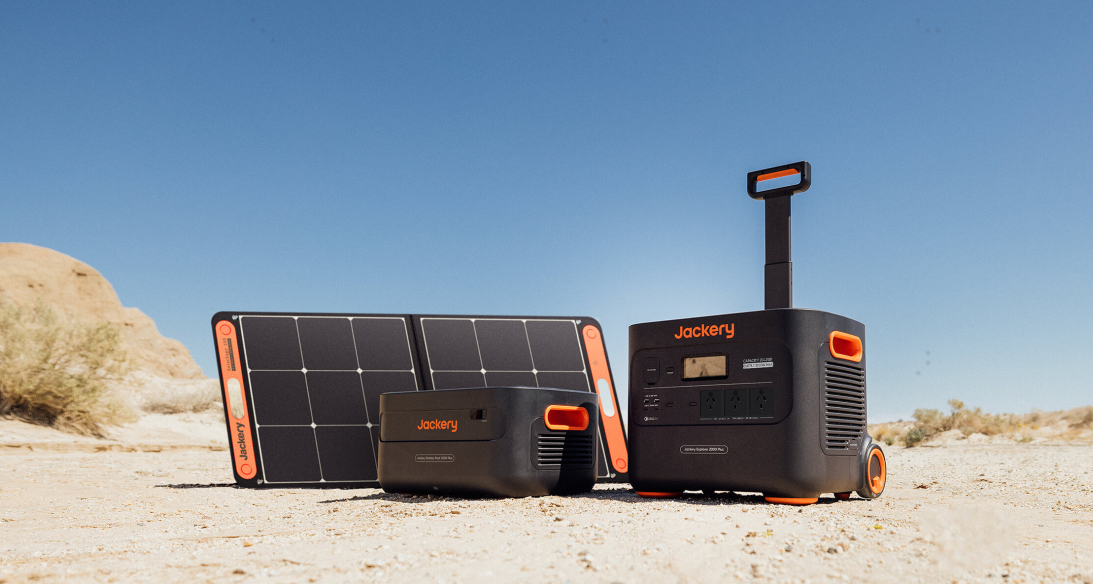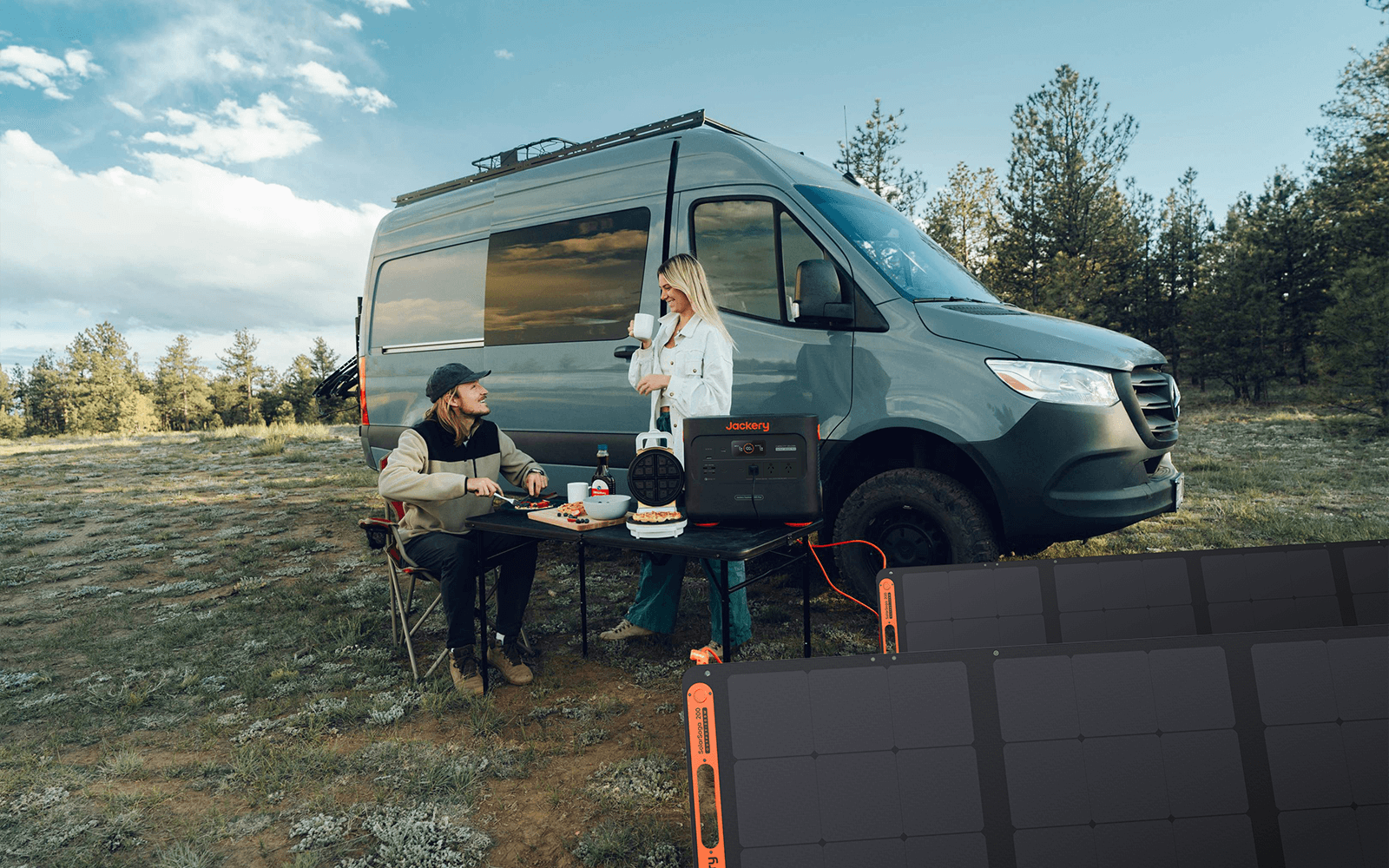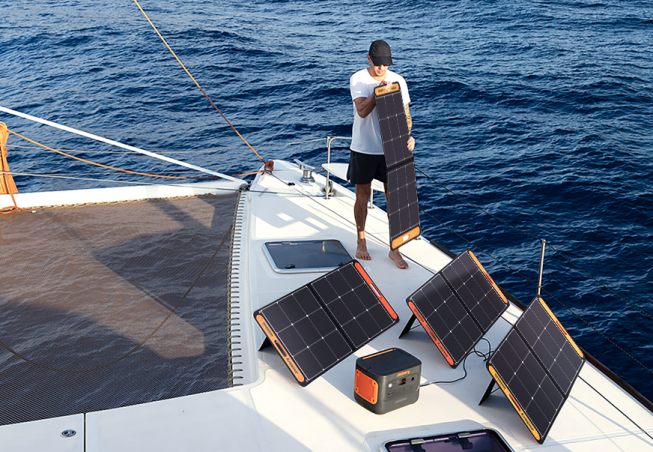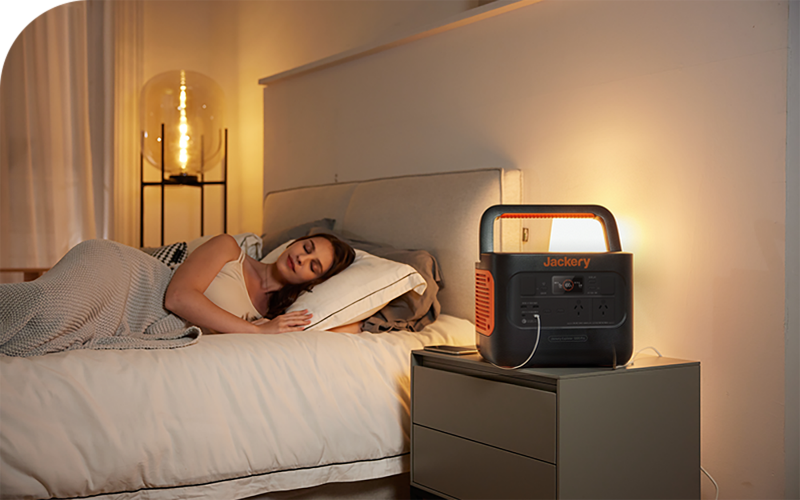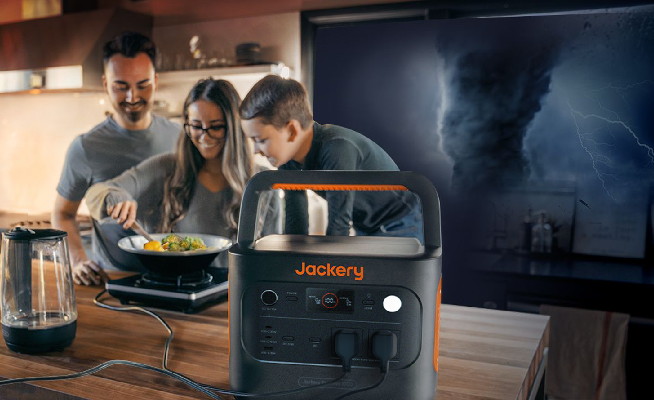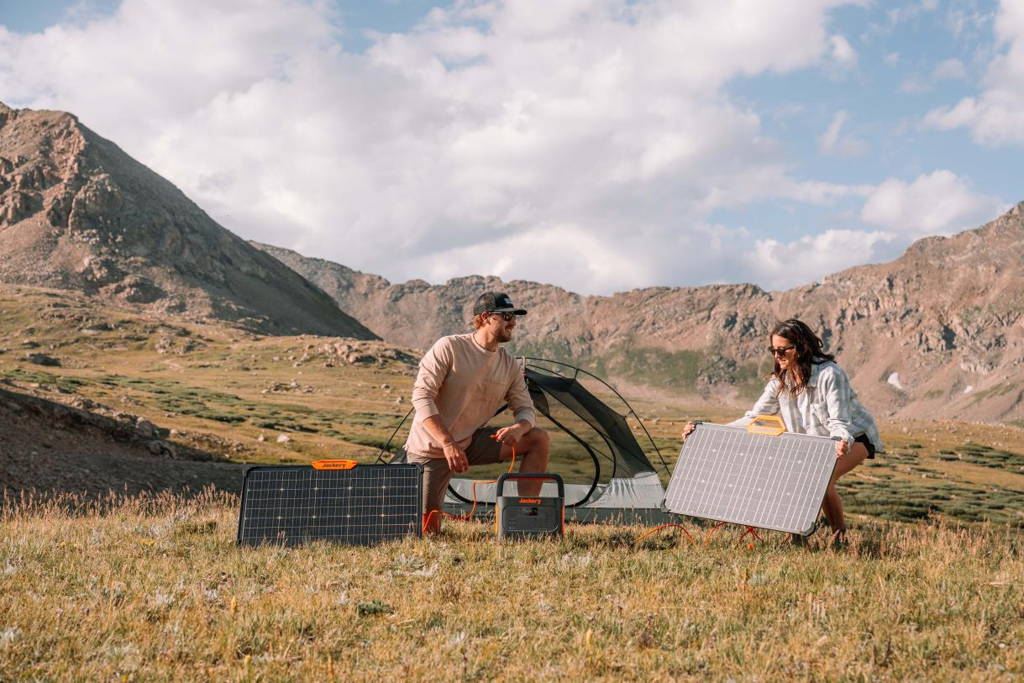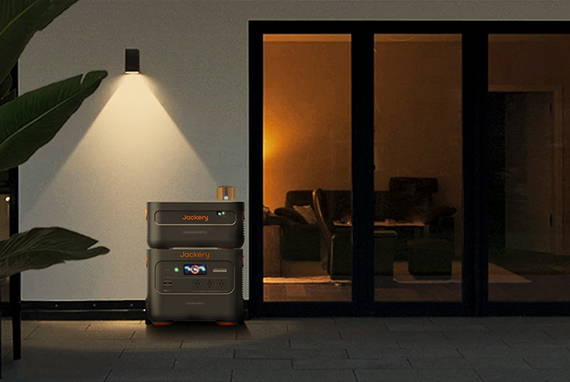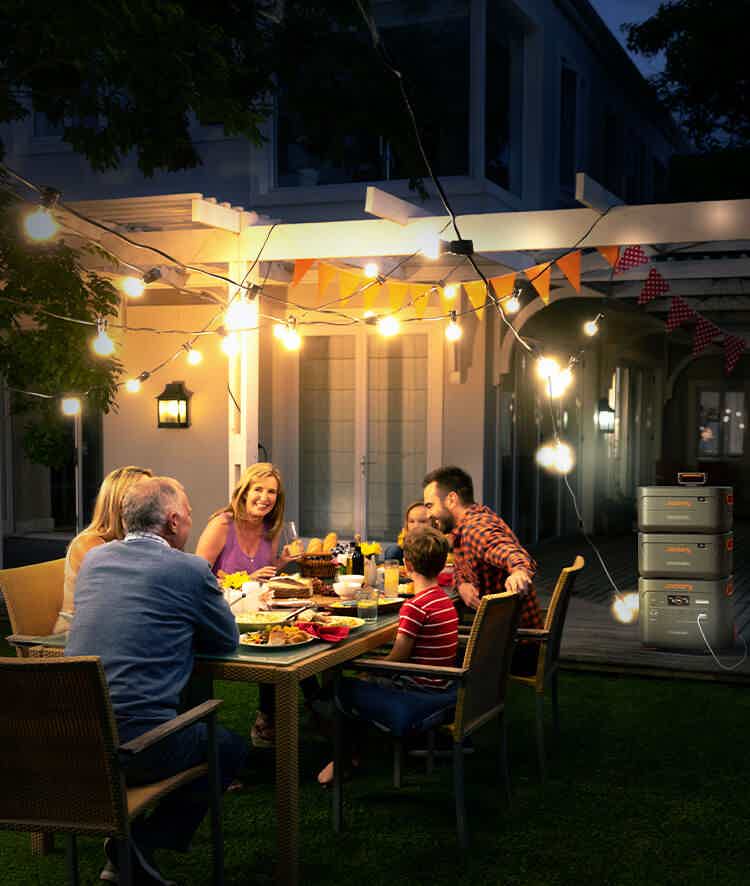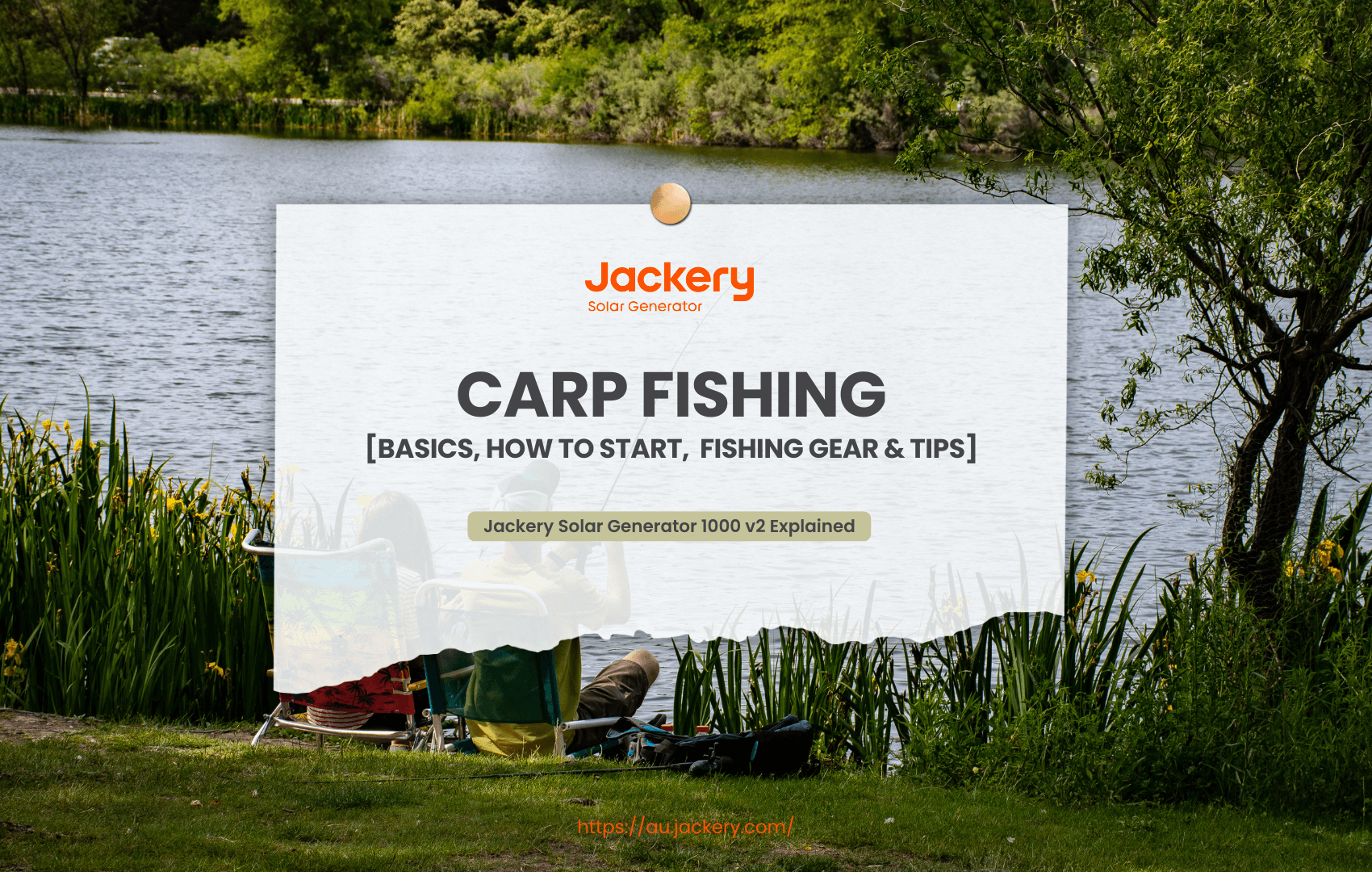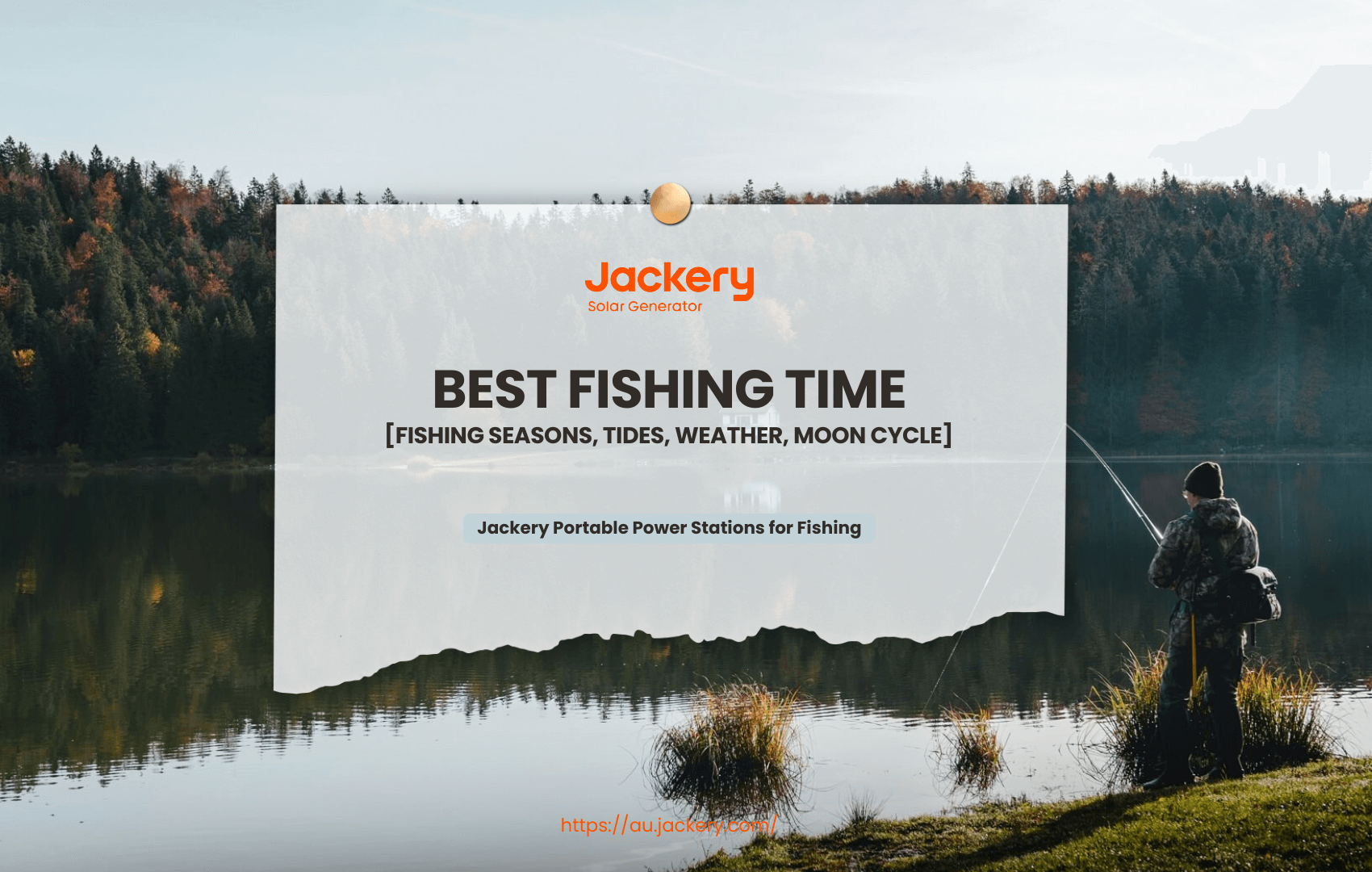|
Key Takeaways: |
|
- Carp are a big freshwater fish endemic to Central Asia. Carp fishing is recognised for its patience and strategy, as the fish are wary and require precise baiting and rig setup. - The best carp fishing rods for you depend on the carp fishing you plan to conduct, such as margin fishing, stalking fishing, float fishing or method feeder fishing. - You'll want something dependable with comparable capabilities for various kinds of equipment. - We recommend the Jackery Solar Generator 1000 v2 as the fishing companion to power fishing electronics outdoors. |
Carp Fishing Basics
Carp are a big freshwater fish endemic to Central Asia. Due to its introduction to numerous countries, carp has become the world's most extensively spread freshwater fish. They are widely farmed in Europe, Asia, and the Middle East and are a popular angling species in Europe. However, carp are considered a major pest in North America, Canada, and Australia.
Carp are incredibly adaptable and may exist in a wide range of habitats, even heavily damaged areas. Carp have spread throughout much of south-east Australia in recent decades. They are currently the most common large freshwater fish in several locations, including the majority of the Murray-Darling Basin. They are regarded to have contributed to the decline of our native aquatic ecosystems.
Carp fishing is a popular angling technique aimed at catching carp, a freshwater fish species known for its power and careful feeding habits. It is extremely popular in Europe, the United Kingdom, and parts of North America.
The fishing community is slowly beginning to recognise the challenges carp fishing offers, although it was traditionally thought of as a harsh fish that was inedible and poor prey for sports anglers. These fish can challenge even seasoned fishermen since they display many of the same behaviours as bass.
Carp fishing is recognised for its patience and strategy, as the fish are wary and require precise baiting and rig setup. Some fishermen practise catch-and-release, while others fish for food.
Types of Carp Fishing Techniques & Rods
The best carp fishing rods for you depend on the carp fishing you plan to conduct. Let's examine some standard carp fishing techniques and considerations to further understand which rods are appropriate for each.

Margin Fishing
Technique: Margin fishing is done close to the bank (within a few feet of the edge), as carp frequently comb the margins looking for natural food. To prevent spooking fish, take a subtle technique that works well in warm weather, early morning, or late evening. Bait options include grain, pellets, bread, worms and boilies.
Fishing Rod: A good rod that can apply the brakes and restore control is necessary when a large, irate carp bursts out at 100 miles per hour. Fishing under the rod tip is an exciting experience. So, which rod should you pick?
A sturdy shock-absorbing rod is necessary when carp fishing this close, and I suggest a "Through Action Rod." Thanks to the design, you have more control over the carp in the margins of the fight, which absorbs all of the fight's energy from the tip to the grip. A test curve of about 2.25 pounds is ideal for this type of fishing.
Stalking Fishing
Technique: Watching the water for clues, listening for the surface suck of a carp feeding, and moving stealthily to avoid detection are all part of the sport of stalking carp, which can be difficult and time-consuming to get right. It's advisable to familiarise yourself with the local water before starting if you're new to the area. Reedy bays, reed beds, banks, a lily pad region, man-made structures, and natural areas are all great places to see carp grazing or basking.
Stalking fishing is an active and mobile fishing method in which you search for carp wherever you go. It is frequently carried out with little equipment and light tackle. Bread, dog biscuits, worms, or maise are common baits that are freelined (without weights or floats) to make them appear natural. It works well in warm weather, shallow water, and clear waterways.
Fishing Rods: When fishing for carp in challenging areas like weeds or snags, a rod with a little backbone is necessary. Since smaller rods tend to have more direct control over the carp in this kind of fishing, I would suggest using one here rather than the typical 12- to 13-footer. A 6- to 9-foot rod is ideal since it allows for greater mobility in bushy regions and reduces the possibility of snagging in the bushes and frightening the carp you have been patiently stalking. A test curve between 1.25 and 2 pounds for these rods is ideal.
Float Fishing for Carp
Technique: This method is interesting since it uses a float to suspend bait at different depths and visually shows bites. Maggots, grain, bread, pellets or worms are excellent baits for tiny to medium-sized carp. It works best in slow-moving rivers or quiet waterways (ponds, lakes).
Fishing Rods: When float fishing, there are a few things to keep in mind, like the weight and length of your rods.
Since you will probably be holding the rod for the majority of your fishing session, its weight is crucial. Before purchasing, you should first grip the rod to feel its feel. The next factor is length.
Float rods are typically 12 to 18 feet long, making them responsive and simpler to flick your float past 20 yards. The eyelets are also better placed slightly farther from the rods to prevent the line from sticking to the shaft. The ideal test curve for these kinds of carp fishing rods is between 1.5 and 2.0 pounds.
Method Feeder Fishing
Technique: A method feeder is a weighted device that stores ground bait or pellets. This technique involves progressively breaking apart the bait, which attracts carp to the hook bait. It works effectively in pressured waters where carp are cautious. Use pellets, ground bait, corn or small boilies as bait in lakes, commercial fisheries and slow rivers.
Fishing Rods: A few things to consider: the action can be rapid and harsh; therefore, your rod selection must match. A solid 12-ft carp rod with a "Semi-through" action is also designed to provide superb shock absorption while playing and landing your carp and a great deal of distance and accuracy when casting to position your bait. Method feeding requires high accuracy because the bait is constantly placed in the same hot zone. A test curve of 2.75 to 3lb is ideal for these rods.
Carp Fishing Equipment
Depending on your preferred fishing technique (fly fishing, baitcasting, spinning, etc.), there are several configurations you can employ for carp fishing. Here is an illustration of a spinning configuration, though. Just remember that you'll want something dependable with comparable capabilities for various kinds of equipment.

Basic Gears
Rod: A medium 7′ rod is generally perfect for Carp fishing. For more detailed recommendations, refer to part 2.
Reel: You generally need a 3000 spinning reel.
Line: For a dependable yet thin line, a braid weighing between 10 and 15 pounds will work well.
Leader: Twenty-five pounds is an excellent starting point for your leader. Upping the leader, however, will assist in reducing line strain and breakage risk for larger carp.
Hooks: The ideal hook size for carp is about a size 6. Because carp have excellent vision and can be frightened by flashy metal, try using dark or camouflaged hooks.
Baits: Carp tend to eat nearly anything; therefore, they are undoubtedly not picky eaters. Using carp bait won't be that difficult for you. Several options are available to you, some of which are also unique.
Live Baits: The most commonly used live baits for carp include worms, minnows, maggots, and small fish species. Carp are drawn to their appearance and vibrant activity. You can buy some from bait or fishing stores or get some on your own.
Artificial Baits: Artificial bait comes after live bait. Instead of going out and catching your live bait, you may use artificials to simulate live species, add more fragrance, control it, and start fishing immediately. Several types of soft plastics, jig heads, and the Korda Pop-Up Maize are examples of popular carp lures. A hungry carp will respond well to anything that resembles live bait or the fish's preferred meal items.
Other Baits: For bait, seasoned carp fishermen rely on bread, almonds, canned corn, and cheesy hotdogs. They claim that the combination of thickness, juiciness, look, and smell helps lure carp to bite.
More Accessories
Sun Protection: Sun protection is essential in Australia’s Harsh Sun; you can bring a Broad-brimmed hat, Polarised Sunglasses, Sunscreen that is SPF 50+, a Long-sleeve fishing shirt, and Fishing gloves that are UV-protective to help you stay safe under the burning sun.
Fishing Boat: Carp fishing in Australia is often done in rivers, lakes, and reservoirs, so you’ll need a boat that’s stable and suited for freshwater; here are some best-fitted types:
- Flat-bottom aluminium boat (Jon boat): It is excellent for calm waters and shallow areas.
- Inflatable fishing kayak: This is easy to transport and launch.
- Small pontoon boat: This is ideal for relaxed fishing with more space.
- Electric trolling motor: It helps you creep through the water.
Fish Finder: Carp are often found in murky water, deep holes, and near structures, so a good fish finder is key.
Portable Power: It can power fishing electronics and devices outdoors without noise.
Carp fishing usually lasts a long time because it's an enjoyable and soothing activity. There will always be annoying events outdoors, such as losing electricity. Therefore, outdoor mobile power can be regarded as a necessary fishing accessory. Jackery Solar Generator responsibly fills this demand. The Jackery Portable Power Station can be charged using the Jackery Solar Panels, wall outlets, or carports. It will make an excellent outdoor power source if you wish to go carp fishing.
Jackery Solar Generator 1000 v2 for Carp Fishing
The Jackery Solar Generator 1000 v2 can be useful for carp fishing, especially for extended sessions. It combines Jackery Explorer 1000 v2 with SolarSaga 100W solar panels to run sunlight into electricity.
Carp fishing often involves extended periods by the water, and the Jackery 1000 v2 can keep essential devices charged, such as your communication, navigation and fishing equipment. For those who enjoy added comfort, the generator can power portable coolers, small fans or cameras.
Many prime carp fishing locations are remote, without access to mains power. The solar charging capability of the Jackery 1000 v2 allows for extended off-grid use, ensuring a continuous power supply.
|
Fishing Electronics |
Running Time |
|
GPS Device (60W) |
11.7H |
|
Portable Cooler (150W) |
5.3H |
|
Electric Trolling Motor (700W) |
1.2H |
|
Camera (8.4W) |
47 Times |
|
Electric Fish Finder (30W) |
19.5H |
(*The working hours are only for reference; the actual working hours depend on your usage.)

Portable Powerhouse: Jackery's upgraded Power Station exhibits a 50% enhancement in power output compared to the previous Explorer 1000 model, with an AC output of 1500W. It charges 7.5 times faster, achieving a full charge in just one hour through the application. The LiFePO4 battery exhibits a lifespan four times greater than conventional batteries, supporting 4,000 life cycles while maintaining over 70% of its capacity.
Charge Fishing Electronics: With a robust 1500W AC output and a surge peak of 3000W, this device can support various home appliances, including air conditioners and induction cookers. The device includes 100W PD Fast USB-C charging (both input and output) for efficient recharging, possesses a substantial 1070Wh capacity, and is designed in a compact size to optimise space utilisation.
Multiple Ports for Multiple Charging: Jackery's Explorer 1000 V2 features six charging ports, including two USB-C, one USB-A, one DC car port, and two pure sine wave AC ports, enabling the simultaneous powering of multiple devices. The device weighs 23.8 lbs and features an ergonomic handle, facilitating portability.
Durability & Reliability: The Jackery Explorer 1000 v2 offers rapid charging capabilities, achieving a full charge in 60 minutes when utilised with the accompanying application. The ChargeShield 2.0 system offers 62 types of safety protection and is CE-certified. It features comprehensive fire and shock resistance to ensure quality and optimal safety.
Higher Conversion: The Jackery SolarSaga 100W Solar Panel efficiently converts solar energy into renewable power using a monocrystalline solar blanket. Its solar conversion efficiency of 23.7% makes it particularly suitable for outdoor applications and unforeseen power interruptions. The ETFE-laminated case enhances the solar panel's durability and weighs 4.69 kg. The item is characterised by its lightweight design, foldability, IP65 waterproof rating, and portability, making it suitable for off-grid excursions.
How to Fish for Carp
Getting carp to bite when you encounter them hungry won't be difficult. However, there are times when having sound knowledge and skills is helpful. Here are some things you can do to increase your chances if you would rather play it passively and wait for a screaming run:

1. Make use of a fine gauge wire hook that has been chemically sharpened (and check the point often). When carp are releasing the bait, they frequently hook themselves. The hook pricks the inside of their mouth as they spit the bait, causing them to fear and run away, setting the hook. They will suck it in, spit it out, and eat it all day long if you use a blunt, huge, or heavy gauge hook, and you'll be lucky if you capture anything. It is too harsh if you cannot gently glide the hook's point across your fingernail to scrape it.
2. Use a good-sized sinker (maybe a ball or bean size 1-3 or heavier) when you are not actively watching your rod. As previously said, the carp will feel the bolt and hook prick, and the sinker's weight may be sufficient to set the hook. They are more likely to carry the bait and spit it as soon as they realise the danger when a lighter sinker is used since it frequently prevents the hook from setting completely.
3. Check your bait frequently, maybe every 20 minutes, even if you haven't had any bites. If all of the bait is still there, think about changing it. Worms die and become limp, bread becomes soggy, and maise loses its taste. When a carp examines your bait, you want it to be as appealing as possible because it relies heavily on taste and smell.
4. Present your bait correctly by filling the hook's shank with bait, leaving the bend and tip uncovered. If possible, push the bait up just above the hook's eye to conceal the eye and knot.
5. Pay attention to your rod since large carp might occasionally bend it slowly without making a sound. Never assume that a tiny tap on the line indicates a small fish because big carp can give tiny bites. You can hit these tiny bites when using the rod and frequently catch a sizable carp.
6. The carp might be startled by a sudden movement of the bait or setup if the rod is held with a slightly slack line. You will feel the bites move down the line if you keep your index finger on the line above the reel with the hand holding the rod. You'll quickly discover what is and isn't worth hitting at. This type of fishing can be challenging in windy conditions.
Whatever method you intend to use, just remember to be patient and ensure that you fight them strategically once you hook into your carp. If they pull, let them run. If they give slack, then reel and keep the line tight. Ensure you pull them away from any structure and try not to let the line rub. Once you get them in the clear, pay attention to your line tension as you draw them closer.

More Tips for Carp Fishing
Although fishing carp, like any other sport, requires practice and patience. Some tips can help you to learn and perfect carp fishing faster and smoother:
Carp are not large strikers and may toy with or sit on your bait for short periods, so pay close attention. Avoid excessive burleying as it will feed them and become difficult to remove once established. Adding a little burley is the best way to keep them interested but hungry, but do so frequently.
Avoid using lumpy burley, as carp consume huge lumps of burley over your bait. When the burley comes into touch with the water, it should break into small pieces, leaving a delightful taste cloud that the carp can ingest. Pay attention to the water since carp may surface and come crashing out in certain lakes.
Carp tend to follow wildlife, possibly due to locals feeding birds and creating burley trails in specific areas. They are usually seen along riverbanks where the water is cooler during summer.
Keep your drag relaxed. Consider pushing rod holders in instead of hammering them in. If you haven't caught many carp before, adjust your drag accordingly. Carp may easily yank a hook from their delicate lips or bust you off on a light line, and they have more pulling strength than is commonly known. If your rod isn't properly attached, they can drag it in. Let them run a little since they have nowhere else to go.
Keep your hands clean to avoid transferring aerogard or sunscreen to the bait. Carp rely on their senses of taste and fragrance. If you do, give them a thorough wash. Carp do not always follow the rule "big bait, big fish." A large hook or bait is not required to catch a large carp. A smaller hook, such as a size 4-12, will help you to catch more.
Andre's 11.15 kilograms carp was caught using a size 8. Make sure your sinker is heavy enough to keep your rig in place during strong gusts. If not, it may roll over the bottom, picking up mud or debris and maybe snagging.
Best Carp Fishing Spots in Australia
Where may freshwater carp be caught? Each species has a favoured site for living, breeding, spawning, food supplies, and other purposes. The same is true for carp. Given that this species is widespread across North America, Asia, and Europe, there are numerous opportunities to find some.
Nonetheless, there are some indications that these fish may exist. Mud, lily pads, weeds, sandy shorelines, structure, leaves, and branches are all qualities that make a location ideal for carp fishing. Be wary of lakes, rivers, and canals. Carp fishing is a popular sport in Australia; plenty of fantastic spots exist. Here are some of the top spots in various regions:

Victoria
Lake Eppalock: Located near Bendigo, this reservoir is known for its abundant carp population.
Lake Eildon: Situated in central Victoria, it's a favoured spot for anglers targeting large carp.
Murray River: Flowing along the border between Victoria and New South Wales, this river is renowned for its carp fishing opportunities.
Yarra River: Running through Melbourne, the Yarra offers accessible urban carp fishing.
New South Wales
Georges River (above Milperra): This section of the river is known to hold carp, with quiet corners ideal for fishing.
Chipping Norton Lake: Located near Liverpool, this lake has many secluded spots where carp can be found.
North Parramatta Dam: Anglers have reported significant carp activity, especially in the back sections.
South Australia
River Murray: Extending into South Australia, this river remains a prime location for carp fishing.
The Coorong: A long, narrow lagoon system offering diverse fishing opportunities, including for carp.
Queensland
Bulimba Creek (behind Carindale): Anglers have observed large carp in this area.
Australian Capital Territory
Lake Burley Griffin: Located in Canberra, this lake is known for its carp population.
Carp Fishing FAQs
The following are the frequently asked questions about carp fishing in Australia:
1. Is carp illegal in Australia?
According to the 2014 Biosecurity Act, carp are classified as restricted hazardous fish. Retaining, feeding, giving away, selling, or releasing carp into the wild is illegal without a permit. You must promptly kill these animals humanely and adequately dispose of them away from any bodies of water if you catch them.
2. What is the best bait for carp?
Sweet corn, bread, boilies, worms and maggots are all easily available and have been shown to be good carp baits.
3. Is carp a good-eating fish?
If the carp comes from clean water, it makes a good meal fish. With very few exceptions, every wild fish can be said to be like that. Wild and aquaculture-raised carp are consumed in many regions of the world. It is a customary component of a Christmas Eve meal in Central Europe.
4. Can you eat carp in Victoria?
Because carp are classified as noxious aquatic species in Victoria, it is illegal to own, transport, or release live carp and use live carp—including goldfish and all varieties of carp—as bait for fishing. The designation of a species as "noxious" does not preclude its use in fishing or eating.
5. Why don't Australians eat carp?
According to their muddy reputation, carp are not considered tablefish in Australia but are considered a pest species. However, using carp as a food source may help alleviate Australia's invasive fish species problem, ultimately improving the condition of our rivers and feeding some of the population.
Final Thoughts
Carp fishing is a fun and rewarding hobby that offers the chance to catch a variety of species in some of the country's most picturesque waterways. Learning how to catch carp can be a fun endeavour for many fishers. Carp are fierce fighters and can be targeted and caught from the shore.
If you have the proper equipment, bait, and fishing skills, you may enjoy the beauty of lakes and rivers while also enjoying a good day on the water. Just be sure to respect the environment and follow your state's fishing regulations and licensing requirements. Furthermore, carrying a Jackery 1000 v2 with you will keep you charged all day.

